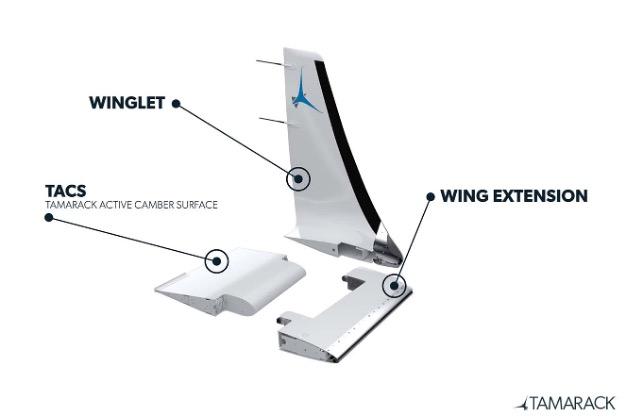Tamarack Aerospace Doing New Tests for King Air Performance Smartwing

Tamarack Aerospace announced at the 2021 National Business Aviation Association (NBAA) Business Aviation Convention & Exhibition (BACE) new demonstration and validation tests for the King Air Performance Smartwing. Tamarack CEO Nick Guida and President Jacob Klinginsmith outlined a development effort with partner Dynamic Aviation. This effort is already underway with a King Air 200 aircraft, making it the second airframe type to take advantages of active winglet technology. The Tamarack system has already proven itself on over 150 Cessna Citation Jets
The Tamarack Performance Smartwing is a unique winglet design that features Active Winglet™ load alleviation technology. It includes an additional control surface, called the Tamarack Active Camber Surface (TACS), which serves to reduce the upward stress on the wing caused by the winglet during most conditions of flight. The result is an installation that can be made with minimal wing modification since additional support reinforcement may not be required. Current installations take less than 10 days, including the time needed to paint the additional wingspan and the winglet.
The King Air installation adds an additional 6-8 ft. of wingspan, depending on model, lowering stall speeds and therefore climb and approach speeds. This will allow the aircraft to take off and land using 10% less runway. Because climb performance is improved, 15% in the case of the King Air 200, aircraft can reach fuel-saving altitudes more quickly. For military applications, the added wingspan allows for longer loiter times due to the lower speeds and higher altitudes.

The Tamarack Smartwing. Credit: Tamarack Aerospace
We’ve long recognized the benefits of adding winglets to a conventionally winged aircraft. But the weight penalties of the additional wing structure needed to combat the added upward stress on the wing have often turned the cost-to-benefit ratio negative. An active winglet reduces or eliminates that added upward stress. Tamarack active winglets have proven the technology in the Cessna Citation Jet (CJ) series. CJ pilots flying typical trips have found their 3-hr. aircraft are turned into 4-hr. aircraft overnight. Being able to climb to higher, more optimal altitudes has been a game-changer for these operators.
Unlike traditional “passive” winglets, the TACS also provides the additional benefit of essentially “turning off” the winglet during high-G events, such as steep bank angle turns and during turbulence. If you imagine a sudden gust of wind pushing the wing and winglet combination up suddenly, you can see having the additional span works against you. The TACS can counter the upward push and remove the winglet’s added force, reducing stress on the wing.
Today’s announcement should be well received by military and other special missions King Air users as a cost-effective way of improving endurance for loiter situations. It should also attract the large civilian King Air market as a way of reducing fuel consumption due to improved climb performance. Both markets will cheer the improved high/hot takeoff performance margins which can provide increased payload capabilities.
